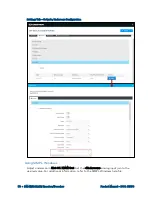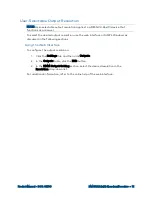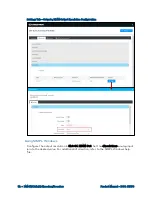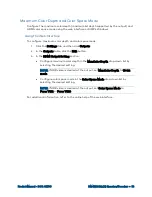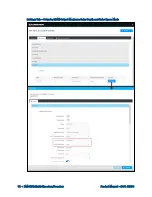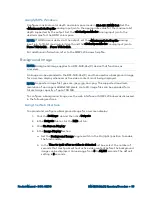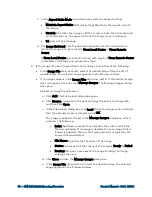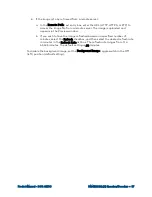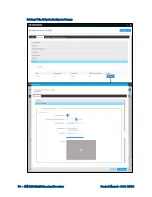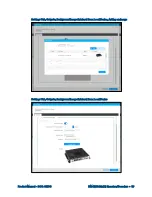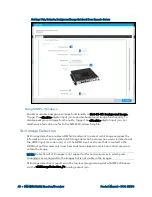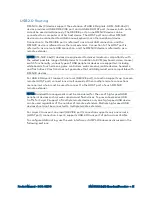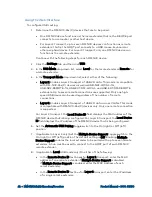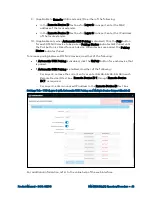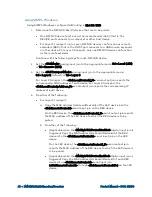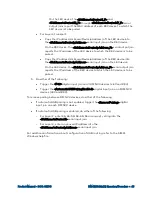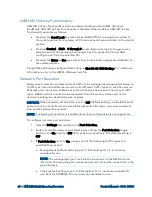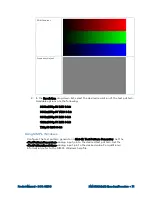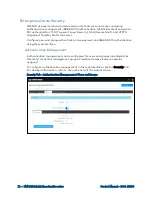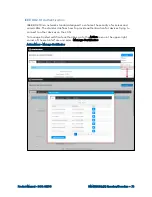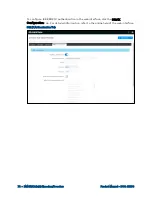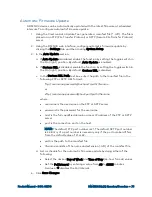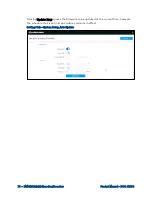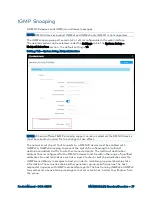
64
•
DM-NVX-36x(C) Encoders/Decoders
Product Manual – DOC. 8879C
Using SIMPL Windows
Using SIMPL Windows, configure USB routing in Slot 30: USB:
1.
Determine the DM-NVX-36x(C) devices that are to be paired:
•
One DM NVX device functions as the local extender (LEX); that is, the
DEVICE port connects to a computer or other host device.
•
For Layer 2 transport, up to seven DM NVX devices can function as remote
extenders (REX); that is, the HOST port connects to a USB mouse, keyboard,
or other device. For Layer 3 transport, only one DM NVX device can function
as the remote extender.
Continue with the following steps for each DM NVX device.
2.
Set the <UsbMode> analog input join to the appropriate mode: 0d = Local (LEX)
or 1d = Remote (REX).
3.
Set the <UsbTransportMode> analog input join to the appropriate mode:
0d = Layer 2 (default) or 1d = Layer 3.
For Layer 2 transport, the <UsbLocalDeviceId_F> serial output join reports the
corresponding MAC address of each device. For Layer 3 transport, the
<UsbLocalDeviceIpAddress_F> serial output join reports the corresponding IP
address of each device.
4.
Do either of the following:
•
For Layer 2 transport:
a.
Copy the MAC address (UsbLocalDeviceId) of the LEX device into the
<UsbRemoteDeviceId> serial input join on the REX device.
On the REX device, the <UsbRemoteDeviceId_F> serial output join reports
the MAC address of the LEX device to which the REX device is to be
paired.
b.
Do either of the following:
•
(Applicable when the <MultipleUsbDeviceDisabled> digital input join is
triggered) Copy the MAC address (UsbLocalDeviceId) of the REX
device into the <UsbRemoteDeviceId> serial input join on the LEX
device.
On the LEX device, the <UsbRemoteDeviceId_F> serial output join
reports the MAC address of the REX device to which the LEX device is
to be paired.
•
(Applicable when the <MultipleUsbDeviceEnabled> digital input join is
triggered) Copy the MAC address (UsbLocalDeviceId) of each REX
device into a <UsbRemoteDeviceId> serial input join
(<UsbRemoteDeviceId> through <UsbRemoteDeviceId7>) on the LEX
device.

